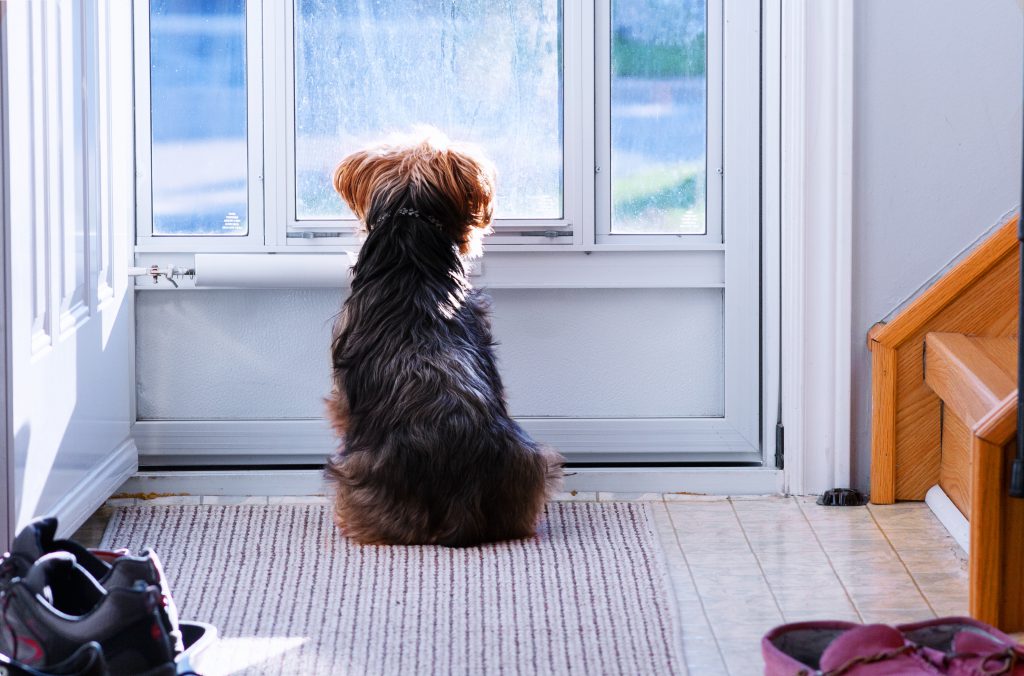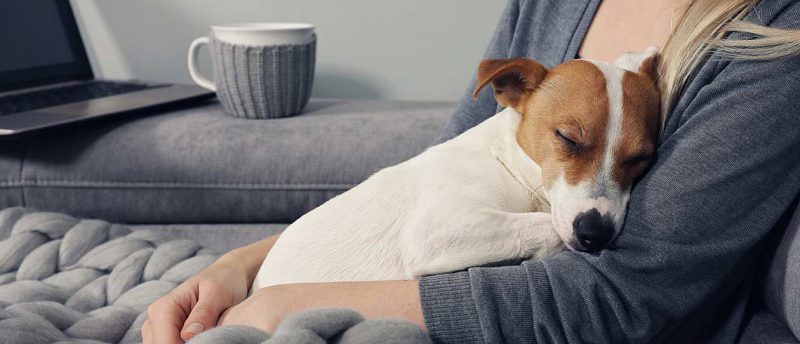No products in the cart.

It has been an interesting time for all during isolation. Some of us are working from home, some have lost their jobs, and others nothing has changed for them. What certainly has changed for our animals is all the time and attention we’ve had to spend with them! They finally have us at home to play and snuggle with. It truly has been wonderful to spend more time together, but as we get closer to returning to a ‘normal’ work life routine, our animals may become confused, and even stressed by our absence. Preparing your animals before you go back to work is so important to their health and wellbeing. Going from zero to 10 hours back at work is a big adjustment for your pets – yes, even for your cats too!
Whilst it’s true that your cats will adapt to your absence a lot quicker, your dogs may find it a lot more stressful, and anxiety can send them into panic attacks which lead to destruction, barking and a few other undesirable behaviours. As dogs live in packs, getting them used to your absence again needs to be done before you begin going back to work. We use a few simple effective strategies to help you pre-empt your dog’s separation anxiety.
ESTABLISH A DAILY ROUTINE FROM NOW
Before COVID-19, you had a morning and evening routine for your dog. Perhaps you walked your dog or played with your dog before feeding, and then headed out to work. Going back to a familiar routine is a great way to help your dog get used to the idea of being on their own. They already know what this feels like and know how to be on their own. If you’re starting your work day later, you can still maintain this daily routine. The time doesn’t matter, it is the routine that tells your dog when and how much time they get to spend with you. This is also a good method to help you adapt to going back to work too. Getting into good habits will create less stress for you and your dog!

If you adopted or purchased a dog during COVID, this is also a great way to get your dog used to being on their own whilst you’re still at home. You can teach them the daily routine they will have when you go back to work, and you can see how well they cope with being on their own. This brings us to the next most important point – cutting back on your love & attention!
LOVING YOUR DOG TOO MUCH
A dog’s love is unrivalled – they give you so much love, affection and attention with no conditions. They really are the ultimate love bugs and support sidekicks we love to have. However, a dog that is stuck to you all day every day will have a harder time adapting to your absence than a dog who is aloof. This is one of the most common ways your dog can develop separation anxiety. If your dog does not know how to be in their own space when you are home, they certainly won’t be able to cope when you go back to work.
This is where you need to restrict yourself from constantly cuddling, loving and kissing your dog whenever you feel like it at home. It sounds horrible, but it is truly the best thing for your dog. Try to keep it within your routine outside of work hours – in the morning & in the evening when you are home. Having said that, do not cuddle and kiss your dog just before you leave and as soon as you come home. This can worsen the situation.

While it has been great to have your animals around you whilst you work, you will need to start preventing them from sitting in your lap or around your workspace, so they get used to being alone again. This is involves using pet gates to separate each other, closing the door if you are in a spare room, and putting them outside in the yard. Yes it will be difficult, however in the long term your dog will be much more settled and happier.
CREATING MENTAL STIMULATION AT HOME
Another great way to help your dog get used to being alone is using enrichment toys and treats that will make your dog work hard mentally. Treat Puzzles or treat stuffing toys give your dog a mental challenge to get to the goodness inside. They will be so focused on what they’re doing, they barely notice you leaving. Another great way of creating enrichment is creating a scavenger hunt for your dog! You can do this inside or outside depending on your dog’s situation. You can use small pieces of cooked meat, your dog’s meal or some low calorie treats to scatter in all different places around your home or in the backyard. But make sure your dog is locked away first – you don’t want to make it easy for them! This helps fulfil their foraging instincts and works nearly every time.
We did a blog on enrichment ideas for your dogs, here is the link to get more great ideas!
Top Tips For Keeping Your Dog Busy Indoors
FLOWER ESSENCES TO EASE ANXIETY
 Your dog may be an anxious pooch regardless of whether you are home or at work. We can certainly give them some Bach flower essences to help them calm down and settle during change. Rescue Remedy is quite popular for alleviating stress in animals and can be given a few days before you go back to work. Walnut is also another good Flower essence, used mainly for big transitions. This will be useful for people whom have adopted their animals during the COVID-19 period, and they’re animals will experience their absence for the first time. Again, you can use these essences ahead of time to prepare your animals before you return to full time work.
Your dog may be an anxious pooch regardless of whether you are home or at work. We can certainly give them some Bach flower essences to help them calm down and settle during change. Rescue Remedy is quite popular for alleviating stress in animals and can be given a few days before you go back to work. Walnut is also another good Flower essence, used mainly for big transitions. This will be useful for people whom have adopted their animals during the COVID-19 period, and they’re animals will experience their absence for the first time. Again, you can use these essences ahead of time to prepare your animals before you return to full time work.
In the end, your animals will notice your absence, and they may feel sad to see you go every day. Yes, even your cats! Cats are solitary creatures so they do adapt quicker than your dogs. If you prepare your animals ahead of time, stay strong in your boundaries too, your animals will embrace the alone time a lot easier.
